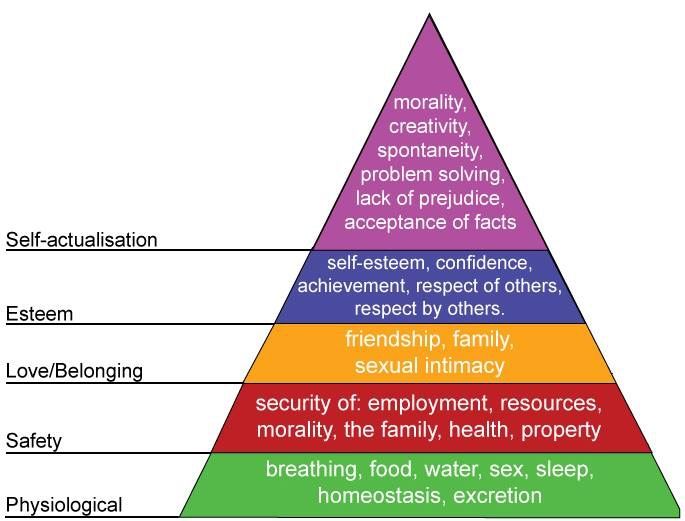Welcome to the world of goal setting in physiotherapy! In this comprehensive guide, we will explore the significance of goal setting in the context of rehabilitation and how it plays a crucial role in the recovery process. Get ready to dive into the world of physiotherapy goal setting and discover its immense value.
The Significance of Goal Setting in Rehabilitation
Effective goal-setting is crucial for successful rehabilitation in various areas, including physical therapy, occupational therapy, and speech therapy. Our team of compassionate professionals takes a patient-centered approach to create customized care plans centered around treatment planning and rehabilitation goals. We aim to empower you on your journey toward recovery by implementing structured therapy processes and utilizing effective techniques to achieve specific outcomes such as improved functionality and independence. Through collaborative care and the use of rehabilitation strategies, we are dedicated to supporting your success in rehabilitating and enhancing overall well-being.
Setting the Stage: Understanding the Importance
Goal setting is a complex and fundamental part of rehabilitation between physiotherapists/physical therapists and their patients or clients. It involves a formal process where rehabilitation professionals or multidisciplinary teams negotiate goals with the patient and/or their family. This goal-setting in rehabilitation establishes a shared understanding of the desired outcomes and serves as a guide for rehabilitation interventions.
Enhancing Client Satisfaction and Recovery
Goal setting is a powerful tool that directs rehabilitation interventions towards specific outcomes, resulting in greater client satisfaction and improved recovery. When patients actively participate in setting their goals, they become more engaged and motivated in their rehabilitation journey. This involvement increases their sense of ownership and empowers them to take control of their recovery process.
The Power of Shared Goal Setting
Shared goal setting also facilitates coordination among members of the multidisciplinary team, ensuring everyone works together towards a common goal without overlooking any crucial aspects of the rehabilitation process. It fosters collaboration, communication, and a patient-centered approach among healthcare professionals, leading to comprehensive and integrated care.
Evaluating Rehabilitation Interventions
Goals serve as a valuable benchmark for evaluating the success of rehabilitation interventions. By comparing achieved outcomes against the set goals, physiotherapists can assess the effectiveness of their interventions and make necessary adjustments to optimize the rehabilitation process. This evaluation serves as a feedback loop to ensure continuous improvement and patient-centered care.
Understanding the Basics of Goal Setting

Psychology at Play: The Motivational Factor
Goal setting is grounded in psychology and based on the belief that humans can change their behavior and work towards a goal. It taps into our innate desire for progress and achievement. When patients set meaningful goals that are functional and directly related to real-life activities, it maximizes their engagement and motivation to participate in physiotherapy.
Unraveling Maslow’s Hierarchy of Needs
Goals can be thought of as hierarchical, drawing inspiration from Maslow’s Hierarchy of Needs. Maslow proposed that individuals prioritize fulfilling their physiological needs before moving on to goals related to safety, security, and higher-level aspirations. Similarly, in rehabilitation, patients may initially focus on basic functional goals, such as regaining mobility, before progressing to higher-level goals related to independence and overall quality of life.

When setting goals, it can be helpful to see things in a hierarchy. This is where Maslow’s hierarchy of needs comes into play. Maslow proposed that people have a hierarchy of needs that they must satisfy in order to live a fulfilling life. This hierarchy begins with basic needs like food and shelter, and progresses to higher-level needs like love and self-actualization. Likewise, in rehabilitation, patients may focus first on basic functional goals, such as regaining their mobility, before moving on to higher goals, such as independence and overall quality of life.
This layered approach to goal setting helps in many ways. First, it helps you prioritize your goals. When your time or resources are limited, you can focus on the goals that are most important to you. Second, it helps you stay motivated. When you achieve each goal, you feel a sense of accomplishment and move on to the next goal with renewed motivation. Finally, it helps you keep track. By knowing that your goals follow a hierarchy, you can avoid getting discouraged when you don’t achieve a specific goal right away. Remember, you can always come back to it later.
Goal Setting for Patient-Centered Rehabilitation
Keeping It Personal: The Importance of Patient-Centered Goals
Goal setting in physiotherapy is crucial in maintaining a patient-centered focus. By involving patients in the goal-setting process, healthcare professionals ensure that rehabilitation plans align with the patient’s values, priorities, and aspirations. This approach fosters a sense of partnership between the patient and the healthcare team, leading to more personalized and effective care.
Communication and Interaction Skills: Key to Holistic Goal Setting
Effective communication and interaction skills are vital for successful goal-setting in physiotherapy. Healthcare professionals need to have the ability to engage in critical reflection and undergo further training in advanced interaction and communication skills. By actively listening to patients and understanding their needs, values, and expectations, physiotherapists can develop relevant and meaningful goals that address the physical, psychological, and social aspects of their well-being.
Defining Goals in Physiotherapy
Time-Based and Activity-Focused Goals
Goals in physiotherapy are often defined by specific timeframes, such as short, medium, or long-term objectives. This structured approach allows for tracking progress and making necessary adjustments along the rehabilitation journey. Additionally, goals in physiotherapy are often activity-based, and centered around functional tasks that patients aim to accomplish. Examples include regaining the ability to walk independently, improving balance, or performing daily activities without assistance.
Exploring Goal-Setting Methods
From Simple Conversations to Structured Approaches
Goal setting in physiotherapy can range from a simple conversation between a physiotherapist/physical therapist and a patient during a treatment session to a more structured approach involving a multidisciplinary team and the patient. In complex cases, decision aids and tools such as prompt sheets or workbooks can be utilized to facilitate greater patient engagement. Involving the patient’s social supports, such as family members or friends, can also play a valuable role in the goal-setting process, especially when they have a significant impact on the patient’s progress and well-being.
SMART Goals: A Common Method
One widely used method of goal setting in various fields, including physiotherapy, is derived from SMART goals. SMART is an acronym for Specific, Measurable, Attainable or Assignable, Realistic, and Time-related. This approach ensures that goals are clear, quantifiable, achievable, relevant to the patient’s needs, and time-bound. Adhering to the principles of SMART goals enables physiotherapists to set meaningful objectives, track progress effectively, and guide the rehabilitation process.
Introducing MEANING: Rethinking Goal Setting
In addition to SMART goals, an alternative approach to goal setting in rehabilitation is MEANING. This acronym emphasizes various aspects of goal setting, such as Meaning, Engage, anchoring, Negotiating, Intention-implementation gap, New goals, and Goals as behavior change. By considering these elements, healthcare professionals can create a more comprehensive and patient-centered goal-setting experience that addresses the individual’s unique needs and fosters behavior change.
The Role of the International Classification of Functioning, Disability, and Health (ICF) Framework
The World Health Organization’s International Classification of Functioning, Disability, and Health (ICF) framework provides a common language and framework to support collaborative goal-setting between families and healthcare providers. While primarily used for matching goal content to ICF domains for documentation purposes, there is an opportunity to incorporate the ICF into clinical routines to promote its use among healthcare providers. Integrating the ICF into goal-setting tools and practices can enhance goal-setting processes in family-centered services and foster comprehensive, holistic care.
In Conclusion
Goal setting plays an essential and dynamic role in physiotherapy. It serves as a compass, guiding rehabilitation interventions toward meaningful outcomes, and fostering patient engagement and motivation. By involving patients in the goal-setting process and utilizing effective communication and interaction skills, physiotherapists can ensure that rehabilitation remains patient-centered, focusing on individual needs and aspirations. Whether using SMART goals, the MEANING approach, or incorporating the ICF framework, effective goal setting in physiotherapy optimizes the recovery journey, empowering patients to regain functionality and improve their quality of life.
Frequently Asked Questions (FAQs)
- Why is goal setting important in physiotherapy?
- Goal setting is important in physiotherapy as it directs rehabilitation interventions, enhances client satisfaction and recovery, promotes collaboration among healthcare professionals, and allows for the evaluation of rehabilitation outcomes.
- How does goal setting in physiotherapy benefit patients?
- Goal setting provides patients with a sense of ownership and motivation in their rehabilitation journey, increasing engagement and leading to improved outcomes. It also ensures personalized care based on individual needs and aspirations.
- What are SMART goals, and why are they commonly used in physiotherapy?
- SMART goals are Specific, Measurable, Attainable or Assignable, Realistic, and Time-related objectives. They provide a clear framework for setting meaningful goals that can be effectively tracked and guide the rehabilitation process.
- What is the MEANING approach to goal setting in physiotherapy?
- The MEANING approach emphasizes various aspects of goal setting, including finding meaning, engaging patients, anchoring goals, negotiating collaboratively, addressing intention-implementation gaps, setting new goals as needed, and recognizing goals as drivers of behavior change.
- How can the International Classification of Functioning, Disability, and Health (ICF) framework be integrated into goal setting in physiotherapy?
- The ICF framework provides a common language and framework to facilitate collaborative goal setting between families and healthcare providers. By incorporating the ICF into clinical routines and goal-setting tools, healthcare professionals can enhance the goal-setting process and provide more holistic care.
- Can goal setting in physiotherapy be applied to different timeframes and activities?
- Yes, goals in physiotherapy can be defined by different timeframes (short, medium, long-term) and can be activity-based, focusing on specific functional tasks that patients aim to accomplish.
- How does goal setting contribute to patient-centered rehabilitation?
- Involving patients in the goal-setting process ensures that rehabilitation plans align with their values, priorities, and aspirations, resulting in personalized and patient-centered care.
- What role do communication and interaction skills play in goal setting?
- Effective communication and interaction skills enable healthcare professionals to understand patients’ needs, values, and expectations, allowing for the development of relevant and meaningful goals.
- Can goal setting in physiotherapy lead to behavior change?
- Yes, goals that focus on behavior change can motivate patients to adopt healthier habits and promote sustainable improvements in their overall well-being.
- How can physiotherapists track progress and evaluate the success of rehabilitation interventions?
- Physiotherapists track progress and evaluate the success of interventions by comparing achieved outcomes against the set goals, allowing them to assess effectiveness and make necessary adjustments for optimal results.

1 thought on “Goal Setting in Rehabilitation: An overview of What Why and How”